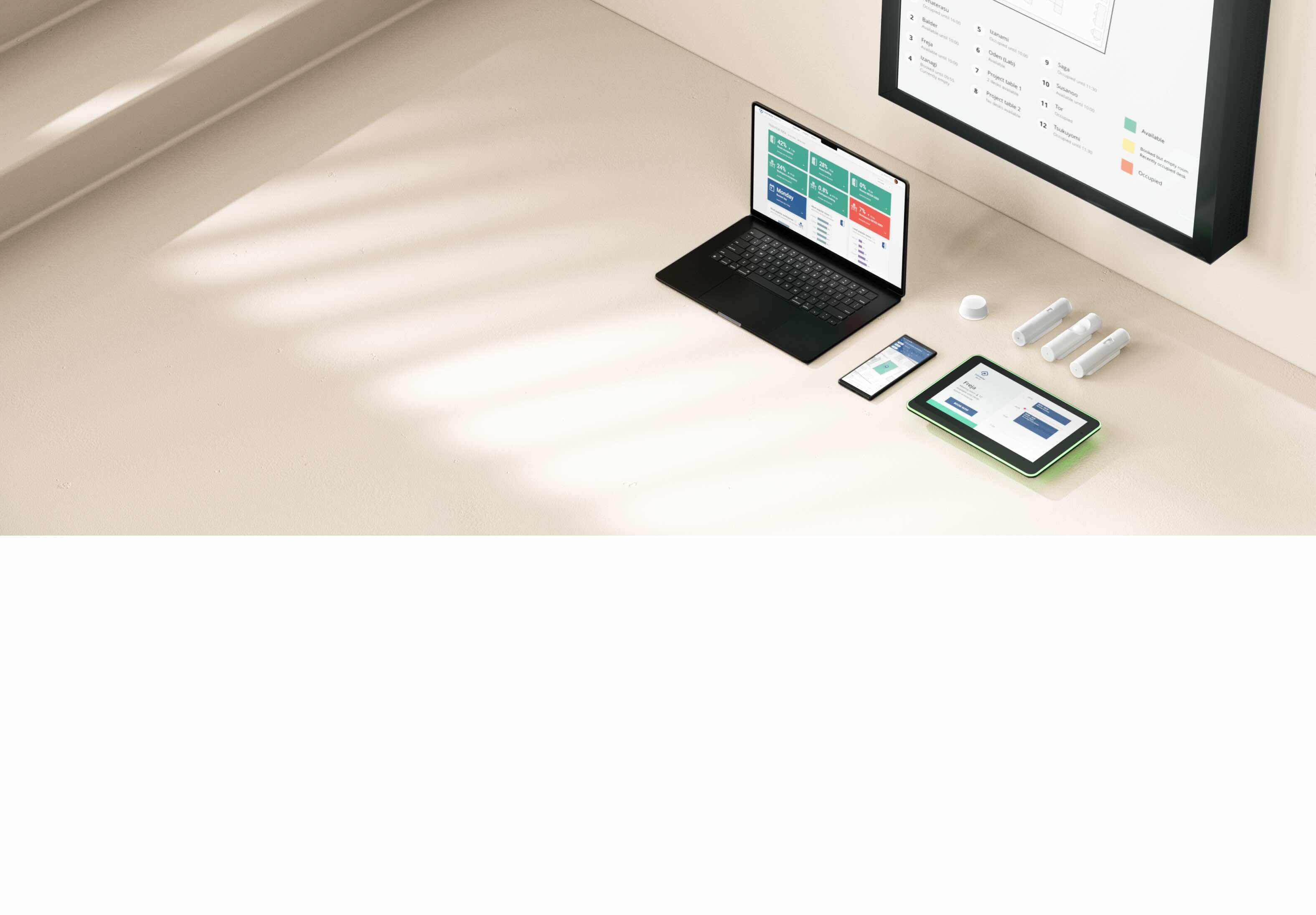


Not sure which smart office sensors your company needs? Download this quick-read guide to find the answer today.

Smart office sensors can automate valuable facility data and empower better workplace experiences for employees. But only if you choose the right technologies for your office, follow best practices, and respect employee privacy.

Our smart office experts are ready to provide a tailored introduction
to choosing the right smart office sensors for your company.
Office occupancy sensors help companies understand and improve how office buildings are used. Wrong-sized, ill-designed, poorly utilized spaces are a burden. They skyrocket corporate real estate costs, but they can also drag down employee satisfaction and productivity.
Office occupancy sensors help companies understand and improve how office buildings are used. Wrong-sized, ill-designed, poorly utilized spaces are a burden. They skyrocket corporate real estate costs, but they can also drag down employee satisfaction and productivity.
Below you'll find some of the most common smart office sensors. Depending on the questions your company is asking about your office spaces and how they are used, you may choose one or many of these sensors.
Motion sensors detect when people enter a space. This gives you essential occupancy insights, but real-time data about occupancy can also enable conflict-free room booking and optimized cleaning schedules. Installed at desks, in rooms, or near doorways to provide comprehensive coverage.
Motion sensors detect when people enter a space. This gives you essential occupancy insights, but real-time data about occupancy can also enable conflict-free room booking and optimized cleaning schedules. Installed at desks, in rooms, or near doorways to provide comprehensive coverage.
These devices collect data points to improve how comfortable and safe your offices are. This includes temperature, humidity, CO2, light levels, sound levels, volatile organic compounds (VOC), and radon. Use this data to automate HVAC systems or give employees insights.
These devices collect data points to improve how comfortable and safe your offices are. This includes temperature, humidity, CO2, light levels, sound levels, volatile organic compounds (VOC), and radon. Use this data to automate HVAC systems or give employees insights.
Keep track of the amount of people, flow
of people, and dwell times in your office
spaces with people counting sensors. This
makes them perfect for large, high-priority
office areas like conference halls, cafeterias,
or floor levels.
Keep track of the amount of people, flow
of people, and dwell times in your office
spaces with people counting sensors. This
makes them perfect for large, high-priority
office areas like conference halls, cafeterias,
or floor levels.
To get the most from your smart office, you’ll need to find the right approach for your company. This means avoiding common mistakes that apply to every workplace, but it also means defining exactly what your own challenges are.



After reading "The essential guide to office occupancy sensors", you will be equipped to choose the right sensor approach for your office spaces.
After reading "The essential guide to office occupancy sensors", you will be equipped to choose the right sensor approach for your office spaces.
Copyright © 2025 Sony Network Communications Europe. All rights reserved